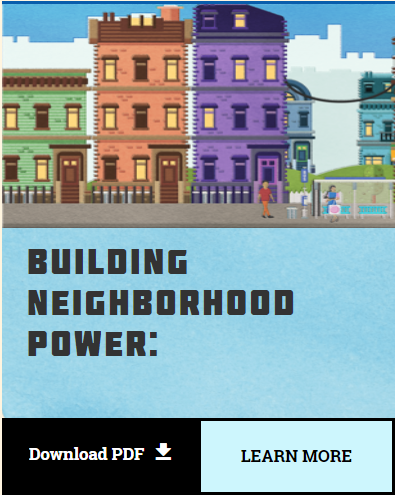
Tools to Engage Webinar Series Part 8: #OurNeighborhoods Anti-Displacement Toolkit
This is the eighth webinar in the Tools 2 Engage series and features Quinn Rhi of National CAPACD and Manisha Lance and Karimah Dillard of Raksha, Inc. Quinn presented the new #OurNeighborhoods Anti-Displacement toolkit, developed by National CAPACD to address gentrification and displacement, and walked us through the toolkit website. Then, Karimah and Manisha introduced us to Raksha, Inc., a Georgia-based nonprofit organization servicing the South Asian community. They discussed the intersections of housing, safety, affordability, and accessibility, and how these issues often result in gentrification and displacement. Raksha, Inc., though not defined by a framework of tenant or neighborhood organizing, is still an organization that makes use of the #OurNeighbhorhoods toolkit as a way to educate communities. At the end of the webinar, the guest speakers discussed the challenges they anticipate on the road ahead, particularly in regard to building leadership in their client populations and finding ways to engage folks who have limited time and capacity.
In case you missed the webinar, we’ve made it easy to watch a recording and download the slides.
Additional resources, organizations, and tools related to the webinar include:

#OurNeighborhoods Organizing Toolkit
#OurNeighborhoods is a network of Asian American and Pacific Islander (AAPI) grassroots organizations committed to addressing the issue of gentrification through neighborhood organizing. A project of the National Coalition for Asian Pacific American Community Development (National CAPACD), #OurNeighborhoods builds power with low-income AAPI residents and youth who have been directly impacted by displacement. They created two toolkits, one for tenants and one for neighborhoods, as a resource for communities as they organize and build community power.
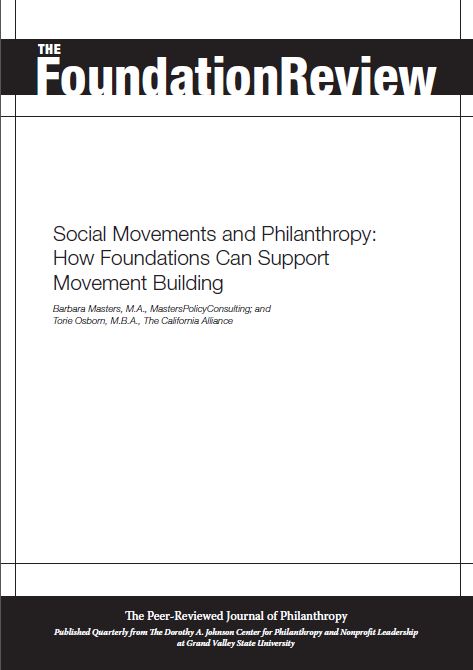
Social Movements and Philanthropy: How Foundations Can Support Movement Building
On page 17 of this report, social service organizations are identified as places that have not been organized to contribute to social change efforts. The author cites the Building Movement Projects Social Service and Social Change: A Process Guide (http://www.buildingmovement.org/blog/entry/22?news/entry/22) as a tool to increase engagement as well as noting other strategies for recruitment.
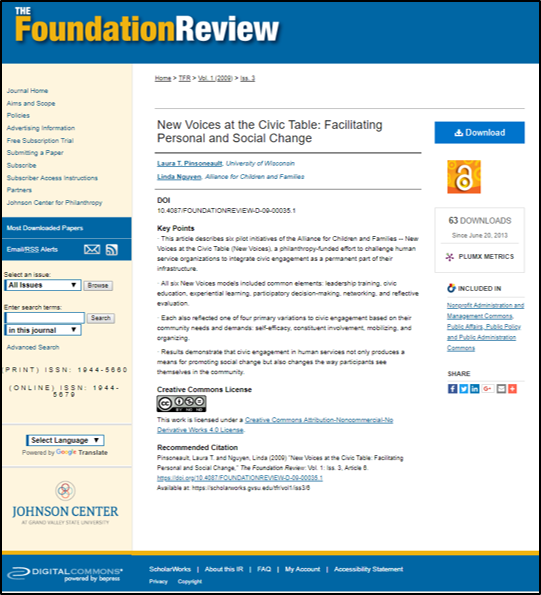
New Voices at the Civic Table: Facilitating Personal and Social Change
This article describes six pilot initiatives of the Alliance for Children and Families — New Voices at the Civic Table (New Voices), a philanthropy-funded effort to challenge human service organizations to integrate civic engagement as a permanent part of their infrastructure. All six New Voices models included common elements: leadership training, civic education, experiential learning, participatory decision-making, networking, and reflective evaluation. Each also reflected one of four primary variations to civic engagement based on their community needs and demands: self-efficacy, constituent involvement, mobilizing, and organizing. Results demonstrate that civic engagement in human services not only produces a means for promoting social change but also changes the way participants see themselves in the community.
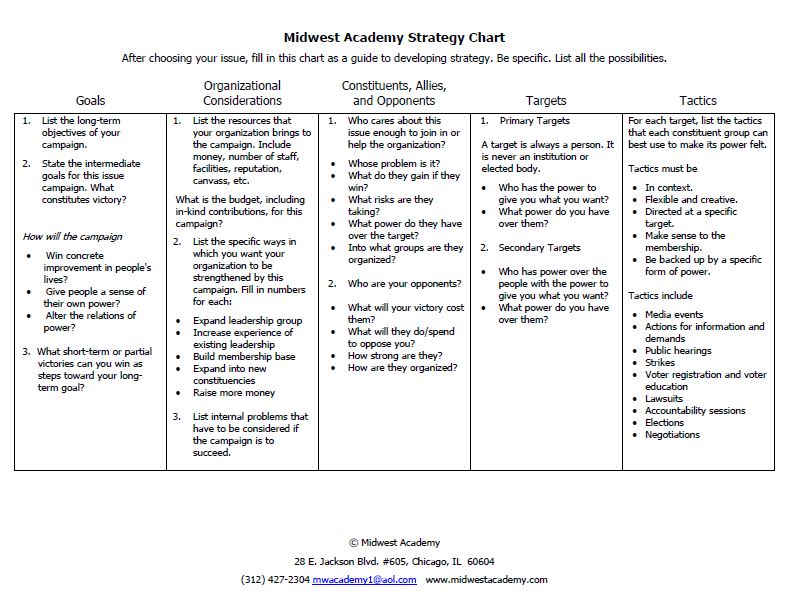
Midwest Academy Strategy Chart
This handout guides the organization to explore what is currently happening within the organization as well as identifying those who will work with you and those who might block your efforts.
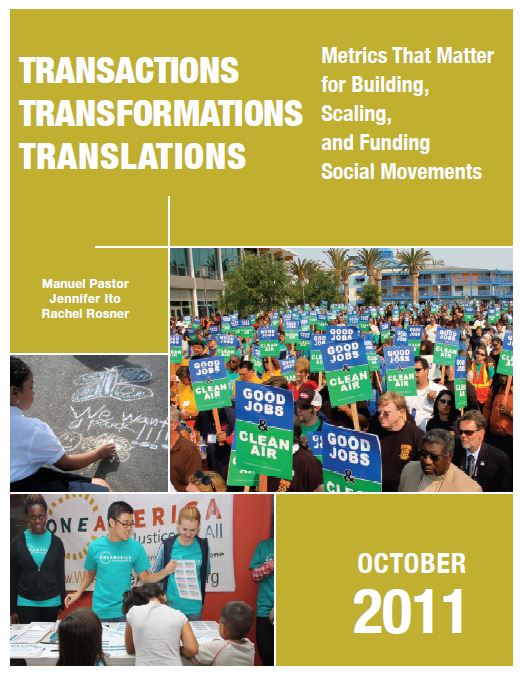
Transactions, Transformations, Translations
“Transactions, Transformations, Translations: Metrics That
Matter for Building, Scaling, and Funding Social Movements” is a way of looking at organizational growth and the alliance building that brings groups together. This evaluation approach can capture the importance of narrative and numbers, of politics and policies, of transformation as well as transaction.
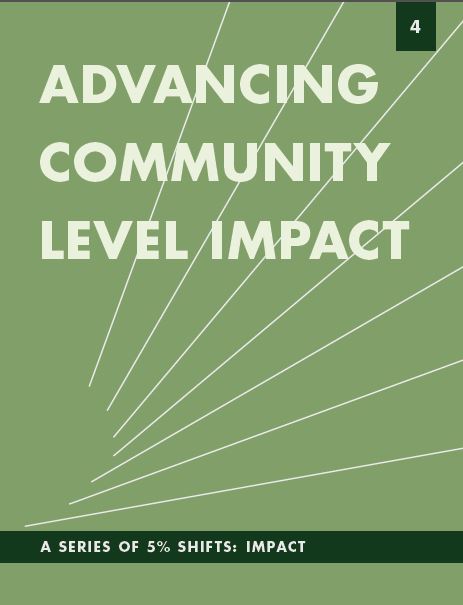
Advancing Community Level Impact
This report examines how two organizations developed and executed strategies that advanced their commitment to bridge the service-organizing “divide” by thinking beyond individual needs to address problems at a community level.
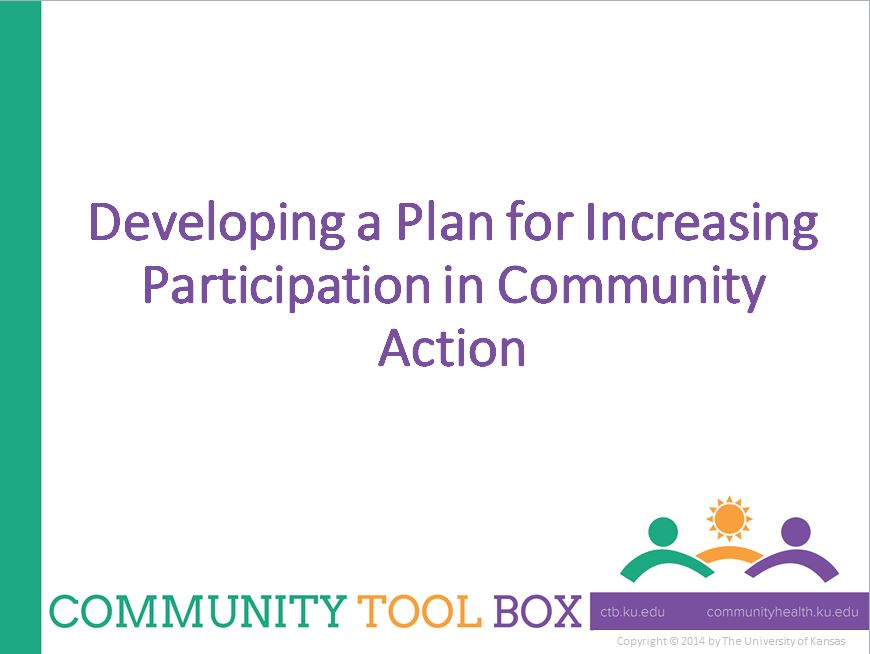
Developing a Plan to Encourage Participation
This resource provides a comprehensive list of questions to ask when developing a plan to become more inclusive of community members. It offers a checklist of action, examples to study and a PowerPoint presentation that summarizes the key points in the section and could be used as a foundation to customize for the organization.
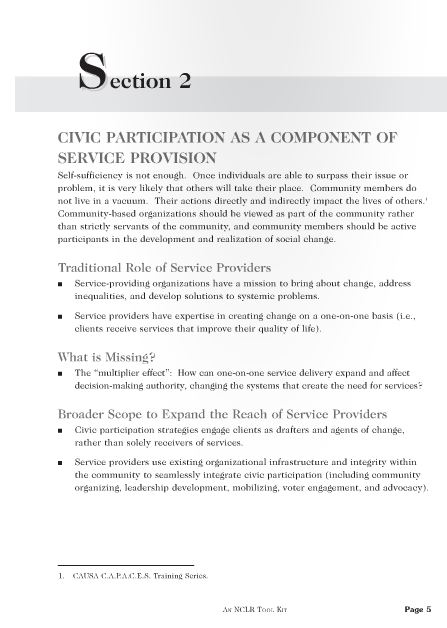
Civic Participation as a Component of Service Provision
This is section 2 of the “Integrating Civic Participation Strategies into Service Delivery Organizations” Toolkit, which was created by the National Council of La Raza (NCLR) in order to create a participation continuum that links constituencies to a variety of civic opportunities such as citizenship promotion and engaging in issues. This section focuses on expanding the traditional role of service providers to affect decision-making authority, changing the systems that create the need for services.
